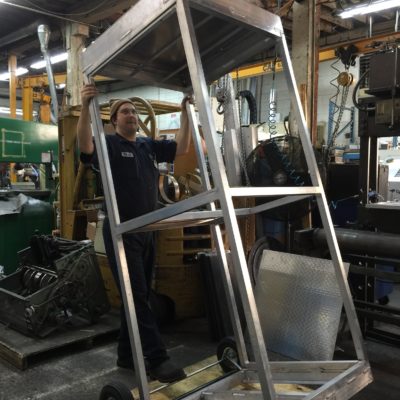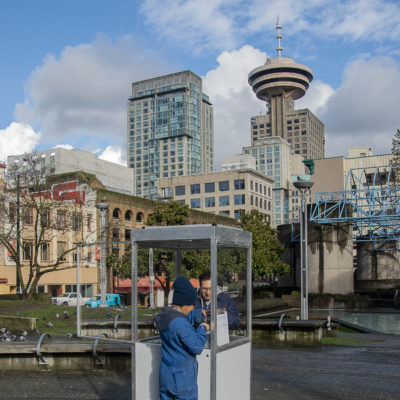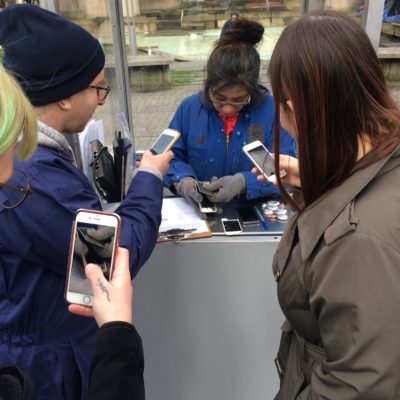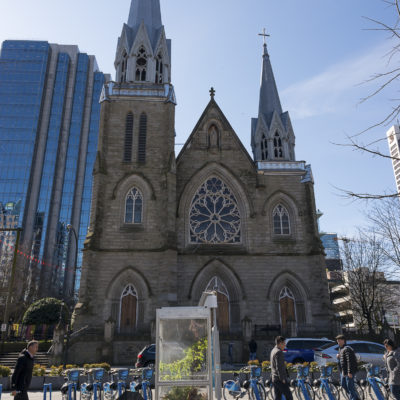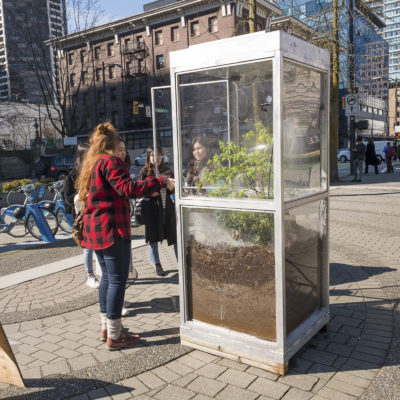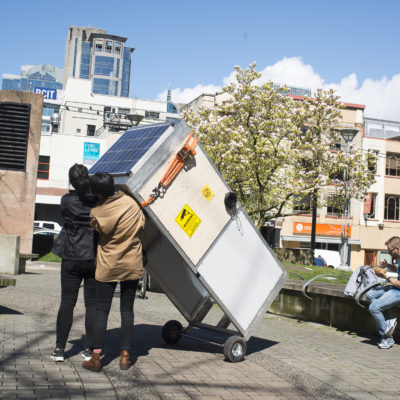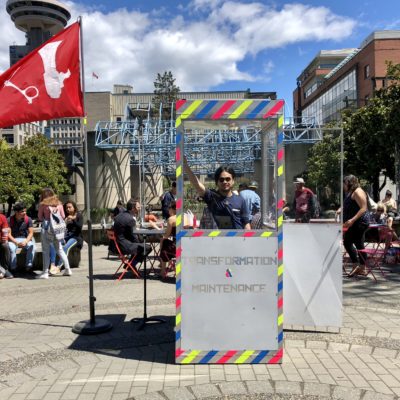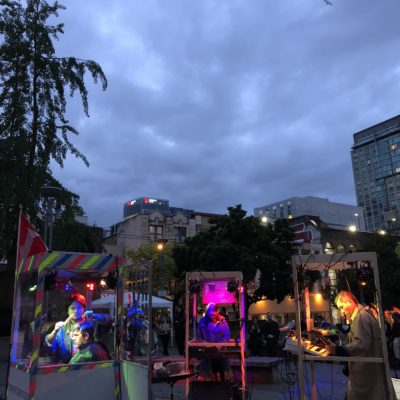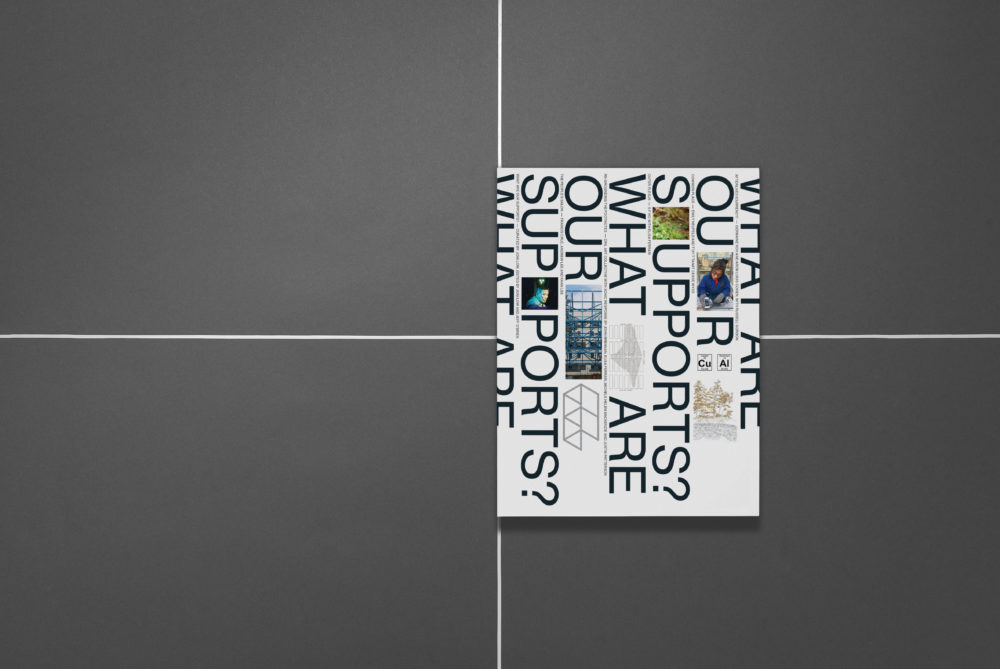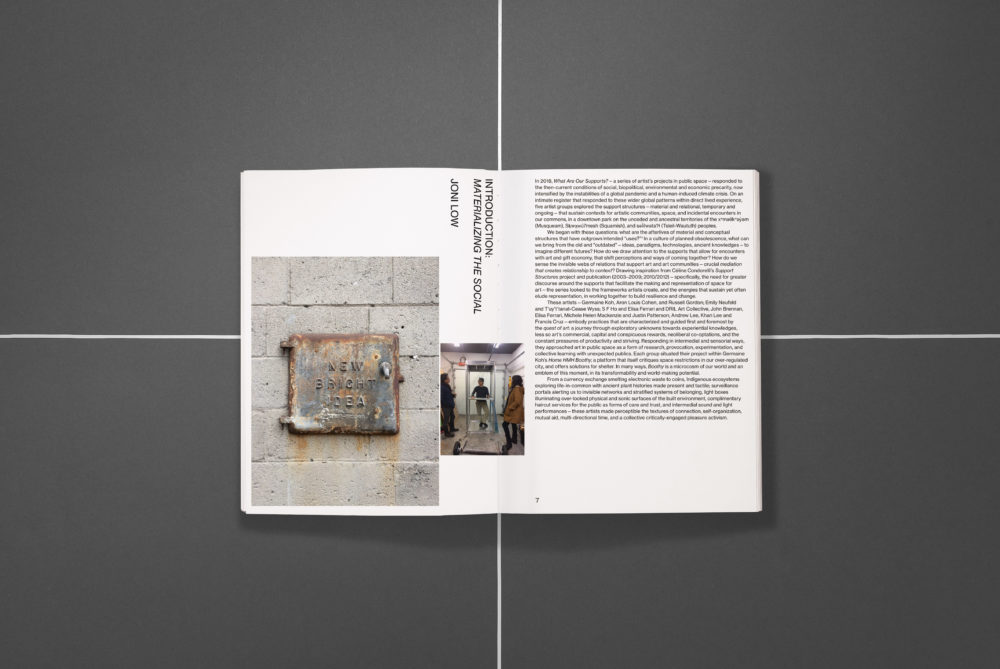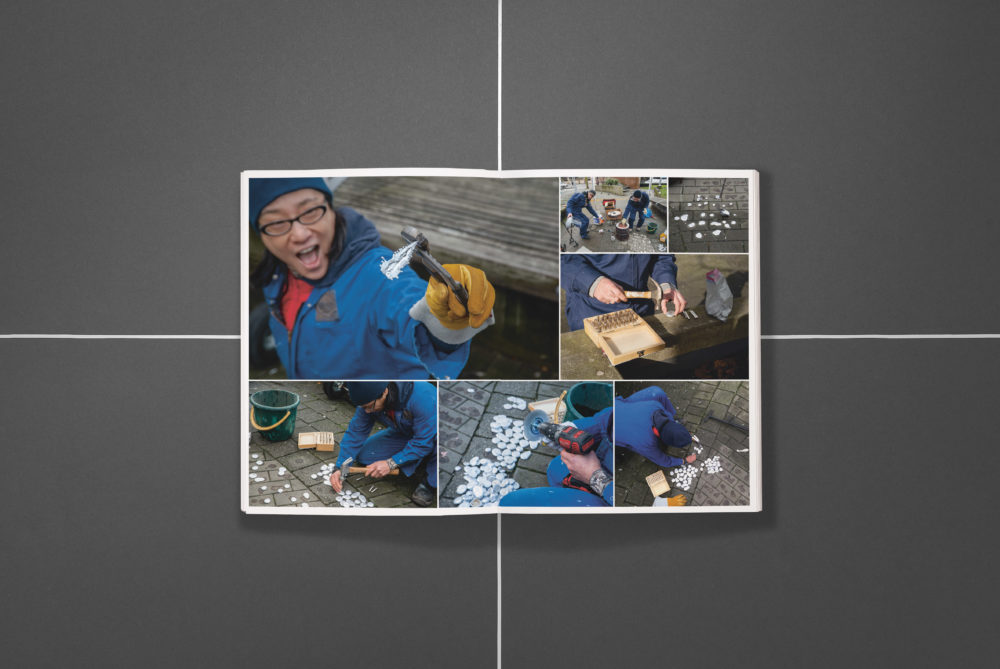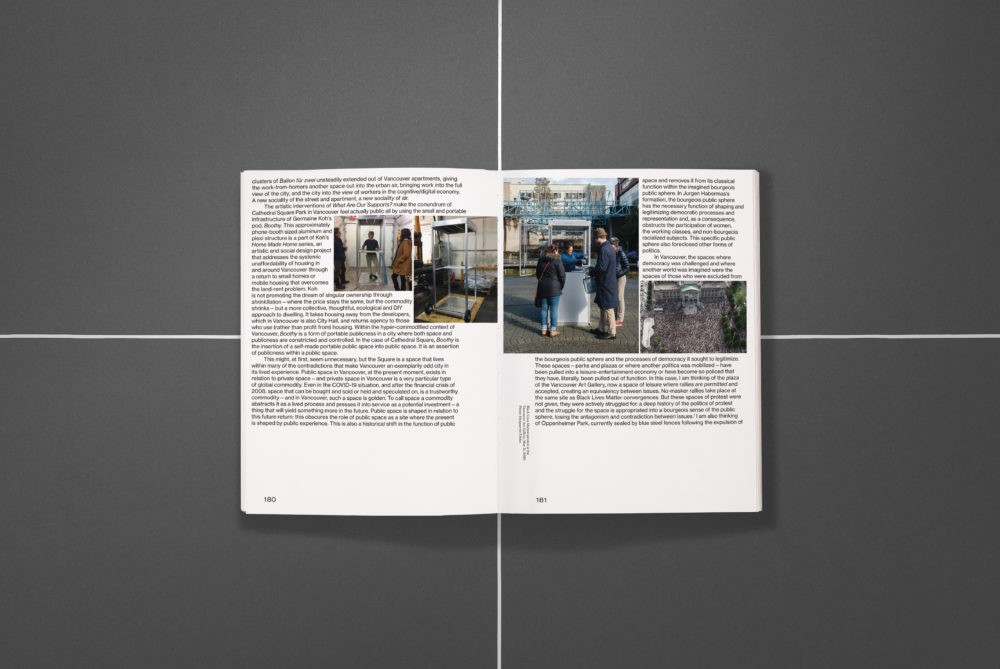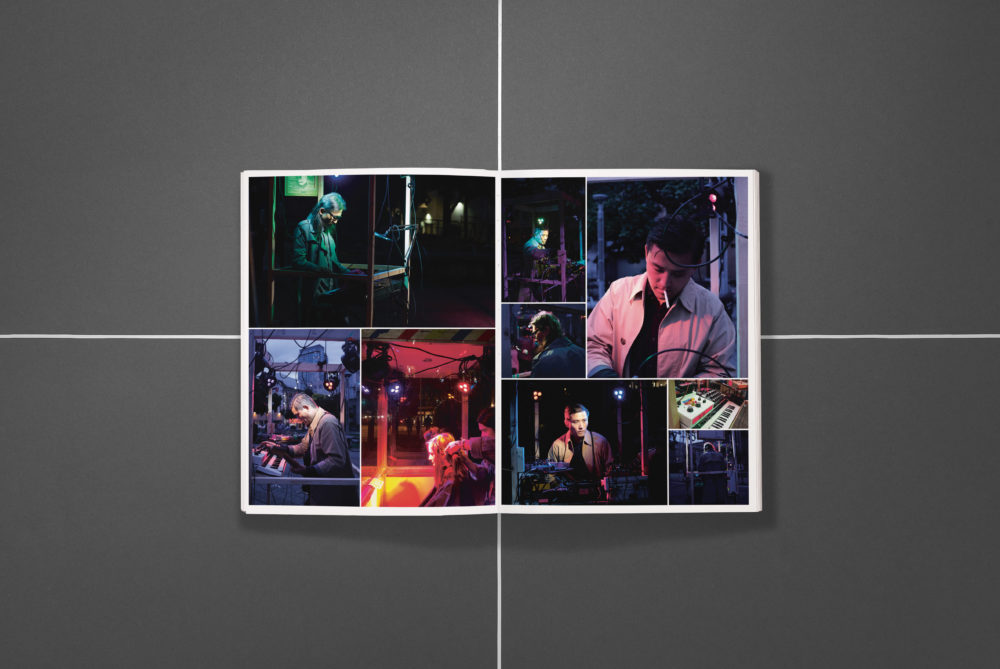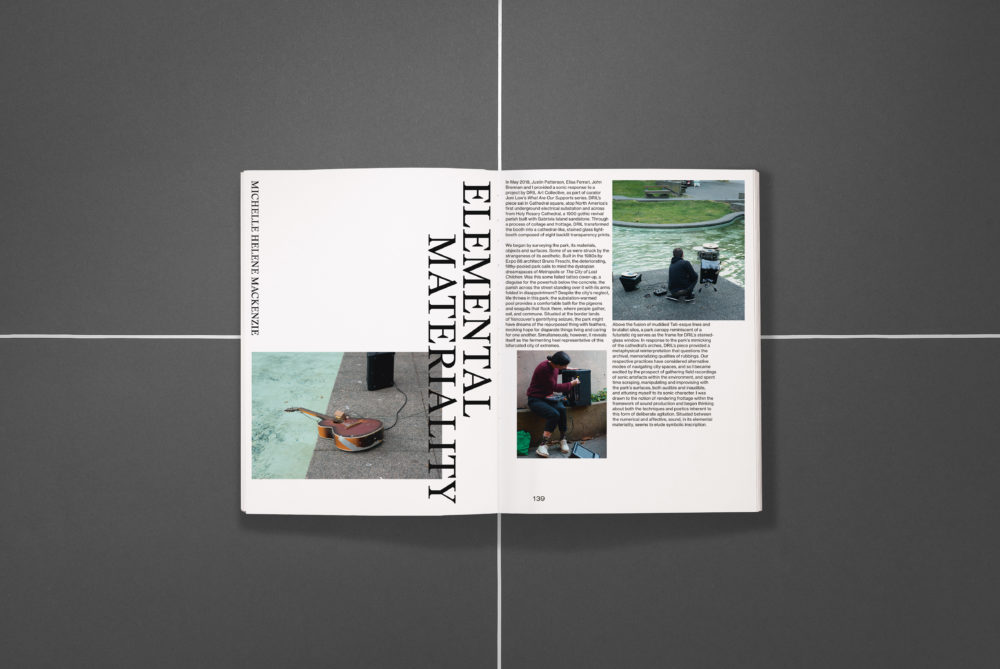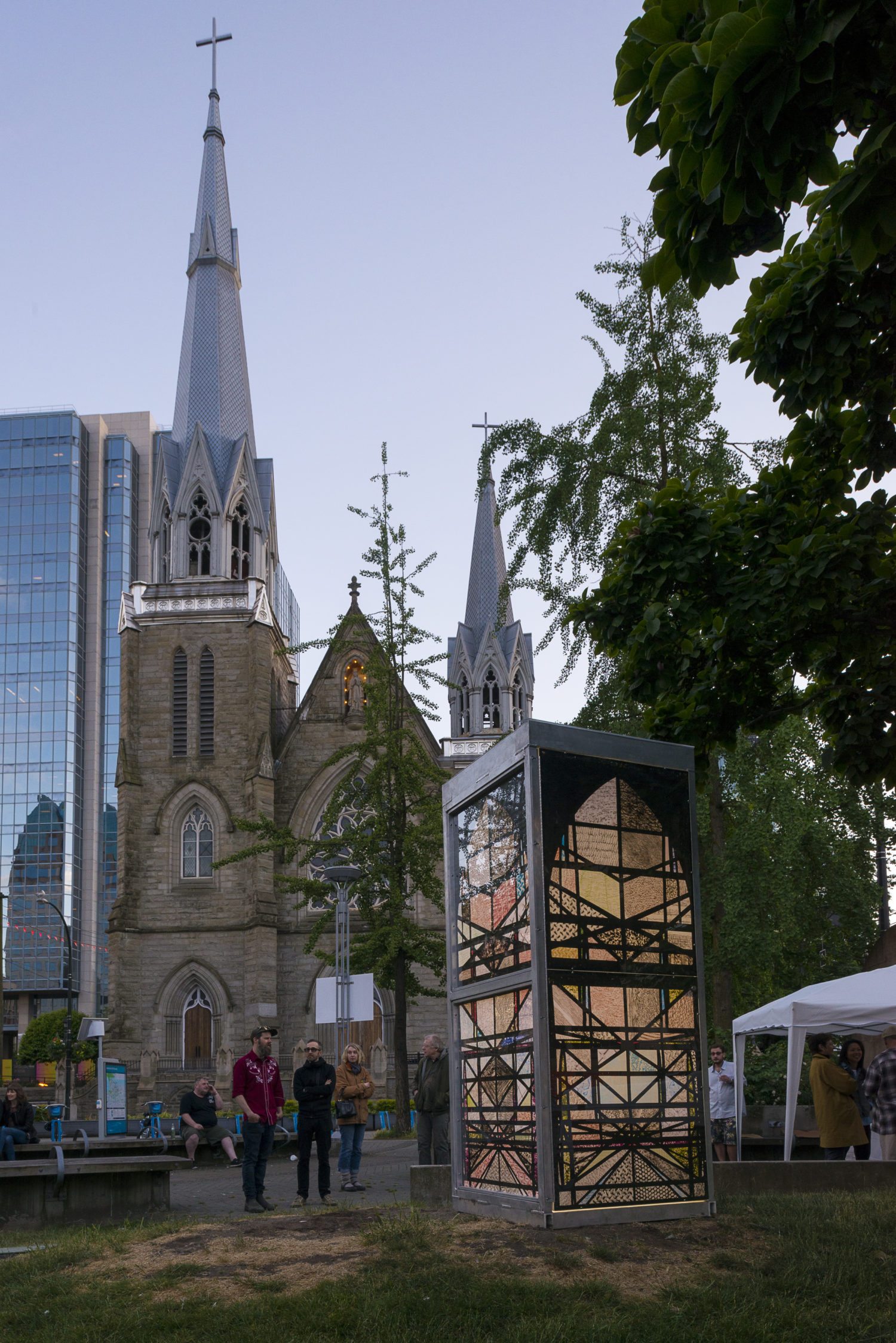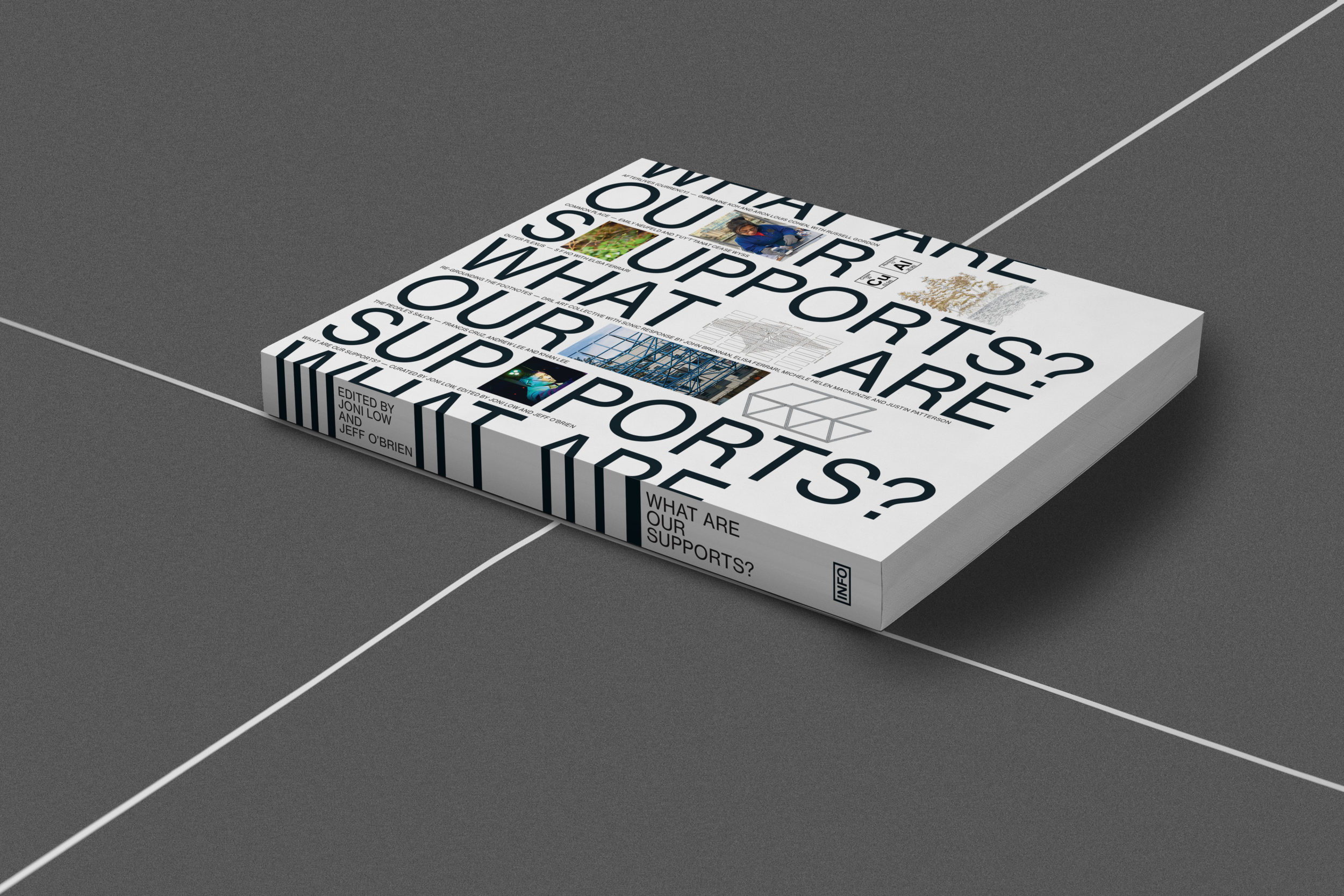
What Are Our Supports?
- Editors
- Joni Low, Jeff O'Brien
- Illustrations
- 280+
- Format
- Layflat Binding
- Size
- 227 x 170mm
- Extent
- 244
- Release
- December 2022
- ISBN
- 978-1988860145
- Price
- 45
What are our supports, amidst current conditions of environmental, social and political precarity? How do artists draw attention to the underrecognized supports — material and relational, temporary and foundational — that sustain contexts for artistic communities, gift economy, and incidental encounters in our commons, amidst the increased privatization of public life? Are there ways to re-inhabit seemingly outdated support structures to embody different futures? What is the role of practice in relation to ongoing struggle?
This anthology, based on a series of artist’s projects in a downtown Vancouver park curated by Joni Low in 2018, reflects on the urgency of these questions now intensified by a global pandemic and human-induced climate crisis. Situated in Germaine Koh’s HMH: Boothy — a telephone booth-like platform and imaginative time-space portal — these projects approach art as quest and friendship as medium, manifesting a critically-engaged pleasure activism. Responding on an intimate register, they made perceptible the embodied support structures and sensorial agency that will continue to guide us through precarity: sensing otherwise, restoring Indigenous worldviews and reciprocity, habituating communal interpersonal rhythms and care, and revealing multiple dimensions of space and time towards incorporeal transformation.
With original artist reflections, invited poems and essays and parallel essay re-prints, the book includes contributions by Germaine Koh, Aron Louis Cohen and Russell Gordon; Emily Neufeld and T’uy’t’tanat-Cease Wyss; S F Ho and Elisa Ferrari; DRIL Art Collective with Elisa Ferrari, John Brennan, Justin Patterson, and Michele Helen Mackenzie; Andrew Yong Hoon Lee, Khan Lee and Francis Cruz; Otoniya J. Okot Bitek, Charlene Vickers, Jeff Derksen, Paula Booker, Jeff O’Brien and Joni Low, and reprinted texts by Celine Condorelli and Leanne Betasamosake Simpson. It also features additional artworks by Chantal Gibson and Otoniya J. Okot Bitek, Debra Sparrow, and Ron Terada.
Contributors
-
Joni Low
is a curator and writer whose practice explores interconnection, intercultural conversations, collaboration and sensory experience. Working in non-profit visual arts organizations for over 15 years, independently she has curated exhibitions at Galerie de L’UQAM, Montréal, Confederation Centre Art Gallery, Charlottetown, and Burnaby Art Gallery, VIVO Media Arts Centre and Or Gallery, Vancouver. Recent curatorial projects include Afterlives: Germaine Koh and Aron Louis Cohen, Charles Campbell’s Actor Boy: Travels in Birdsong, Hank Bull: Connexion and the symposium Underground in the Aether. Low’s essays and criticism are published in catalogues and numerous art periodicals; she is an editorial board member of The Capilano Review. As a SSHRC Doctoral Fellow at Simon Fraser University’s School for the Contemporary Arts, her research focuses on artists sensing otherwise towards different ways of knowing, and synaesthetic resonances across art, neuroscience, somatics and the humanities.
-
Jeff O'Brien
is an art historian. His research explores the political and visual representation of displaced and disappeared populations in Lebanon and Palestine. From 2018 to 2019 he was a fellow in residence of Modern and Contemporary Arab Art at Darat al Funun in Amman, Jordan. In addition to publishing widely, he has presented his work and given lectures in Jordan, Palestine, the United States and Canada. He is currently working on a book of his photographs from Lifta, one of the last remaining extant Palestinian villages within the 1948 border after Nakba. He holds a PhD in art history and works at the University of California, Santa Barbara.
-
Otoniya Juliane Okot Bitek
is a poet. Her 100 Days (University of Alberta, 2016) was nominated for several writing prizes including the 2017 BC Book Prize, the Pat Lowther Award, the 2017 Alberta Book Awards and the 2017 Canadian Authors Award for Poetry. It won the 2017 IndieFab Book of the Year Award for poetry and the 2017 Glenna Lushei Prize for African Poetry. Otoniya is also the author of Sublime: Lost Words (The Elephants, 2018). She is the 2020 Ellen and Warren Tallman Writer-in-Residence at Simon Fraser University and a 2021 Jack and Doris Shadbolt Fellow, also at Simon Fraser University. In 2021 she joined Queen’s University as Assistant Professor of Black Creative Writing.
-
Paula Booker
is a curator, writer, video artist and gardener. She has held leadership, editorial, programming and outreach roles in diverse artist-run centres, galleries and heritage organizations for the last 20 years. Raised on a farm near Auckland in Aotearoa, New Zealand, she is a life-long organic gardener, with ongoing practices of permaculture, compost production and habitat restoration. Paula believes that work in the arts that supports Indigenous sovereignty can be both reparative and generative of new spaces for social justice, and this is the focus of her research. She holds a Master’s in Critical Curatorial Studies from the University of British Columbia, where she researched a model of decolonization informed by Indigenous analyses of colonization and theorizations of unsettlement, always cognizant of issues of place.
-
Aron Louis Cohen
is an artist currently based in San Francisco, California. His work explores technology and craft production. Influenced by work in art conservation, Cohen’s artworks typically consist of intimate objects centered around a hands-on viewer experience. Cohen has been artist-in-residence at Wave Hill's winter workspace, as well as a Scholar for the Advanced Study of Book Arts at the CBA New York. Cohen's work has been exhibited in the USA and internationally. In 2013 Cohen participated in the exhibit Landslide/ Possible Futures in Markham Ontario, growing and transforming a field of flax into books. Recent exhibitions include Mage at the radiator gallery New York and Afterlives at Or Gallery, Vancouver. Cohen holds a bachelor's degree in photography from Rhode Island School of Design and a Master’s in Fine Art from Parsons, The New School for Design.
-
Céline Condorelli
(IT, UK) is a London and Lisbon-based artist, and was one of the founding directors of Eastside Projects, Birmingham, UK; she is the author and editor of Support Structures published by Sternberg Press (2009). Condorelli combines a number of approaches from developing structures for ‘supporting’ (the work of others, forms of political imaginary, existing and fictional realities) to broader enquiries into forms of commonality and discursive sites. Recent exhibitions include Two Years’ Vacation, FRAC Lorraine, France and TEA, Spain (2020-2021); Céline Condorell, Kunsthaus Pasquart, Switzerland, Equipment; Significant Other, Austria, Host/Vœrt, Kunsthal Aarhus, Denmark; Ausstellungsliege, Albertinum, Germany (2019); Zanzibar, permanent installation for the Kings Cross Project, United Kingdom, and exhibition at Vera Cortes, Portugal (2018), Proposals for a Qualitative Society (spinning), Stroom Den Haag, Netherlands; Corps à Corps, IMA Brisbane, Australia, including a sculpture garden which won Australian Institute of Architects Art and Architecture Prize (2017). Her first monograph, bau bau was published by Mousse (2017).
-
Francis Cruz
is a hair stylist and musician based in Vancouver, BC as an uninvited guest on the land of the Coast Salish peoples–Sḵwx̱wú7mesh, Stó:lō, səl̓ílwətaʔɬ and xʷməθkʷəy̓əm Nations. His art practice is an inquiry on the human psyche through the lens of a hairstylist. Informed by his interests in performance, clownology, Muay Thai and esoteric practices, Cruz assists in manifesting people's idealized desires through the customization of haircuts as a means of healing, self-care and self-realization. He has presented work in Centre A, LIVE Biennale, 221a, VIVO Media Arts Centre, Dynamo Arts Association, and Surrey Art Gallery.
-
Jeff Derksen
lives in Vancouver and Vienna. His critical books include After Euphoria, Annhilated Time: Poetry and Other Politics, and the pamphlet How High is the City, How Deep is Our Love. He recently published the article, “Canadian Literature and the Temporality of Dying Colonialism,” in the University of Toronto Quarterly. His poetry books include The Vestiges, Transnational Muscle Cars, and Down Time. He collaborates with Sabine Bitter and Helmut Weber in the artistic research collective, Urban Subjects. Their books include The Militant Image Reader, Momentarily: Learning from Mega Events (with Bik Van der Pol and Alissa Firth-Eagland), and Autogestion: Henri Lefebvre in New Belgrade. In 2017 they brought The Vienna Model: Housing for the 21st Century to the Museum of Vancouver and most recently they curated the exhibition If Time Is Still Alive at Camera Austria.
-
DRIL Artist Collective
is Dylan McHugh, Rachel White, Ian Prentice and Leisha O’Donohue. We are grateful to live and work in Vancouver, Canada, the unceded territories of the xʷməθkʷəy̓əm, Sḵwx̱wú7mesh and səl̓ílwətaʔɬ Nations. Drawing from diverse backgrounds in the trades, craft traditions, and the visual arts, our collective was founded in 2009 to exchange skills and resources through collaboration on multimedia artworks. Our practice comes together as a culmination of shared labour, and an intertwining of ideas, knowledge and disciplines. From a phenomenological perspective we navigate the intersections between photography, architecture and the everyday. Project development hinges on the unanimous agreement of all group members. In this sense, the nature of the collective is akin to a small community working in solidarity.
-
Germaine Koh
is an artist and curator based in Vancouver, on the ancestral territories of the xʷməθkʷəy̓əm, Sḵwx̱wú7mesh, and səl̓ílwətaʔɬ Nations. Her work adapts familiar objects to create situations that look at the significance of everyday actions and common spaces, and which encourage connections between people, technology, and natural systems. Her current projects include Home Made Home, an initiative to build and advocate for alternative forms of housing, and League, a participatory project using play as a form of creative practice. From 2018 to 2020 she was the City of Vancouver’s first Engineering Artist-in-residence and she is the 2021 Koerner Artist-in-residence at the University of British Columbia.
-
S F Ho
is an artist living on the unceded territories of the xʷməθkʷəy̓əm, Sḵwx̱wú7mesh, and səl̓ílwətaʔɬ Nations. Their practice considers intersections of culture, history, and embodied experience from racialized, queer perspectives. Informed by a background in photography and performance art, they often incorporate language, sound, and gesture into their work. They also spend a lot of time thinking about math, plants, and perfume. Ho has presented work through Simon Fraser University Galleries, Hangar (Lisbon), Art Metropole (Toronto), Galerie oqbo (Berlin), RAM Galleri (Oslo), the University of Toronto’s Justina M. Barnicke Gallery, and the Vancouver Art Gallery. Their creative and critical writing has been published through House House Press, SPEC/FIC, Modern Painters, c magazine, West Coast Line, INTER: art actuel, Dysfyction, The Capilano Review, Western Front, and the Kitchener-Waterloo Art Gallery. They founded Slow Wave Small Projects, a land-based art gathering that prioritizes low-income, disabled, BIPOC, and QTIPOC2S practices. They wrote a book about aliens and love called George the Parasite. Their chapbook Green Lines was shortlisted for the Expozine Alternative Press Awards. Since 2018 they have served on the Governance Committee of VIVO Media Arts, guiding the organization through crucial organization assessments while co-chairing the Board of Directors.
-
Andrew Yong Hoon Lee
works in moving image, sound, drawing and sculpture and examines sensory perceptions through the use of language, experience and space. His practice explores themes that range from the relationship between sounds and meaning in language, the phenomenologies of the diasporic, and how memory and migration perform new imaginaries. Materially, Lee uses the lexicon of sound as it relates to other fields of knowledge. Musicality can be attributed to a drawing and a sound installation can become a space to explore the phenomenological qualities of different modalities. Through harmony and the dissonance of intertextual and intermedia strategies Andrew investigates the social, the political and the poetic. He has presented works at the Center For Performance Research in Brooklyn, NY (2012), The International Symposium On Electronic Arts in Vancouver, BC (2015), The Asia Pacific Foundation of Canada (2016), The Vancouver Art Gallery (2017), Mono No Aware Festival of Cinema-Arts Brooklyn, NY (2018), Achtung Cinema Paris, France (2019), Kinoskop International Analog Film Festival, Belgrade, Serbia (2019), Ann Arbor Film Festival, Michigan (2020), and Radio Alhara, Bethlehem (2021). Andrew is based in Brooklyn.
-
Khan Lee
was born in Seoul, Korea. He studied architecture at Hong-Ik University, before immigrating to Canada to study fine art at Emily Carr Institute of Art and Design. He works in performance, media, sculpture and drawing. His practice involves experimentation with form and process in order to express inherent relationships between material and immaterial content. He is a founding member of the Vancouver-based artist collective Intermission and is presently a member of Instant Coffee artist collective. His work has been exhibited nationally and internationally. Lee lives and works in Vancouver BC and is represented by the Equinox Gallery.
-
Michelle Helene Mackenzie
is an artist, writer, and musician who was born and lives on the unceded, ancestral, and traditional territories of the xʷməθkʷəy̓əm, Sḵwx̱wú7mesh, and səl̓ílwətaʔɬ Nations. Mackenzie uses electronics, modular synths, field recordings, video, text, and archival research to explore ecological consciousness, sonic perception, and deep listening. Her collaborative ambient noise project with Stefan Maier and Helene S.M. explores insect intelligence & imaginaries, tiny noise and psychoacoustics, and her Orchid Mantis will be performed at Cent-Quatre Paris as part of INA-GRM’s Live Electronics concert series in January 2022. Mackenzie holds a BA from Simon Fraser University, and is currently pursuing a PhD in Music at the University of California, San Diego. Mackenzie’s works have been presented with 221A (Vancouver), the Albertinum (Dresden), the CAG (Vancouver) Capilano Review’s Small Caps (Vancouver), the Cultch’s Soft Cedar (Vancouver), Deep Blue (Vancouver), the Esker Foundation (Calgary), the Hand (New York), Kadist Gallery/Yerba Center for the Arts (San Francisco), the Operating System (Brooklyn), the Polygon Gallery (North Vancouver), SFU Galleries (Vancouver), the Vancouver Art Gallery, and the Western Front (Vancouver).
-
Alexa Solveig Mardon
is settler of mixed Finnish and British Isles ancestry, a queer dancer, writer, choreographer, support worker and facilitator raised and living on xʷməθkʷəy̓əm, Sḵwx̱wú7mesh, and səl̓ílwətaʔɬ lands. Alexa's practice includes making dances, writing about dances, dancing, teaching, and community actions, often overlapping and blurring together. Dance is the practice through which they sense and engage with the world around them, build nervous-system resilience, and gather in creative resistance and joy with existing and emergent communities. Alexa's writing and choreography has been presented across time and space including with Summerworks Festival, OFFTA, The Dance Centre, Charcuterie Magazine, ISSUE Magazine, VIVO Media Arts Centre, and Made In BC. With Erika Mitsuhashi, they make interdisciplinary performances as Mardon + Mitsuhashi. As a dancer they have performed for companies and artists including Sasha Kleinplatz (Montréal) Benjamin Kamino (Montréal), dumb instrument dance (Vancouver), battery opera performance (Vancouver/Toronto), and Justine A. Chambers (Vancouver). They are currently completing their MFA at DAS Choreography, University of the Arts Amsterdam, where their research focuses on the intersections of ancestral magic, nervous system regulation, and collaborations with frontline support workers.
-
Emily Neufeld
was born in Alberta, on Treaty 6 and 7 land, and now lives and works on the unceded territory of the xʷməθkʷəy̓əm, Sḵwx̱wú7mesh, and səl̓ílwətaʔɬ, currently known as North Vancouver. Her practice investigates place and how humans change and are changed by the surrounding environment, and the layers of memory and psychic history that accumulate in our material world. Her Mennonite and Scottish colonial history informs her understanding of place and her relationship to these stolen lands. In addition to collaborative projects with other artists, recent solo exhibitions include Prairie Invasions: A Lullaby (Richmond Art Gallery, 2020), Before Demolition: Tides (Eyelevel Gallery, Halifax, 2019), Motherlands (The Pole, Den Haag, ND, 2019) and Before Demolition (Burrard Arts Foundation, Vancouver, 2017). Neufeld has created and participates in community sharing gardens and sees land as fundamental to her research process. She received her BFA from Emily Carr University of Art and Design in 2013.
-
T'uy't'tanat-Cease Wyss
is a Skwxwú7mesh /Stólō/Hawaiian/Swiss artist who works with digital media, writing, performance and interdisciplinary arts, and is a community-engaged and public artist. For over thirty years her practice has focused on sustainability, permaculture techniques, Coast Salish cultural elements and has included themes of ethnobotany, indigenous language revival, Salish weaving and digital media technology. Cease has focused on connecting her Polynesian roots to her Salish roots through weaving and digital media projects. She has recently been given opportunities for collaborating with Indigenous peoples throughout Oceania, specifically Polynesian peoples. Cease is embarking on a series of Futurisms projects on national and international projects and will be collaborating with artists and scientists in development of these new works.
-
Charlene Vickers
is an Anishinaabe artist living and working in Vancouver. Born in Kenora, Ontario and raised in Toronto, her painting, sculpture, and performance works explore memory, healing, and embodied connections to ancestral lands. Vickers was the recipient of the VIVA Award in 2018. Her works are in the permanent collections of the Museum of Anthropology, Vancouver; Vancouver Art Gallery and the University of Toronto.
Co-Published with Richmond Art Gallery, Information Office, Doryphore Curators Society, and Art Metropole
This publication is produced with support from Canada Council for the Arts and City of Vancouver Project Assistance
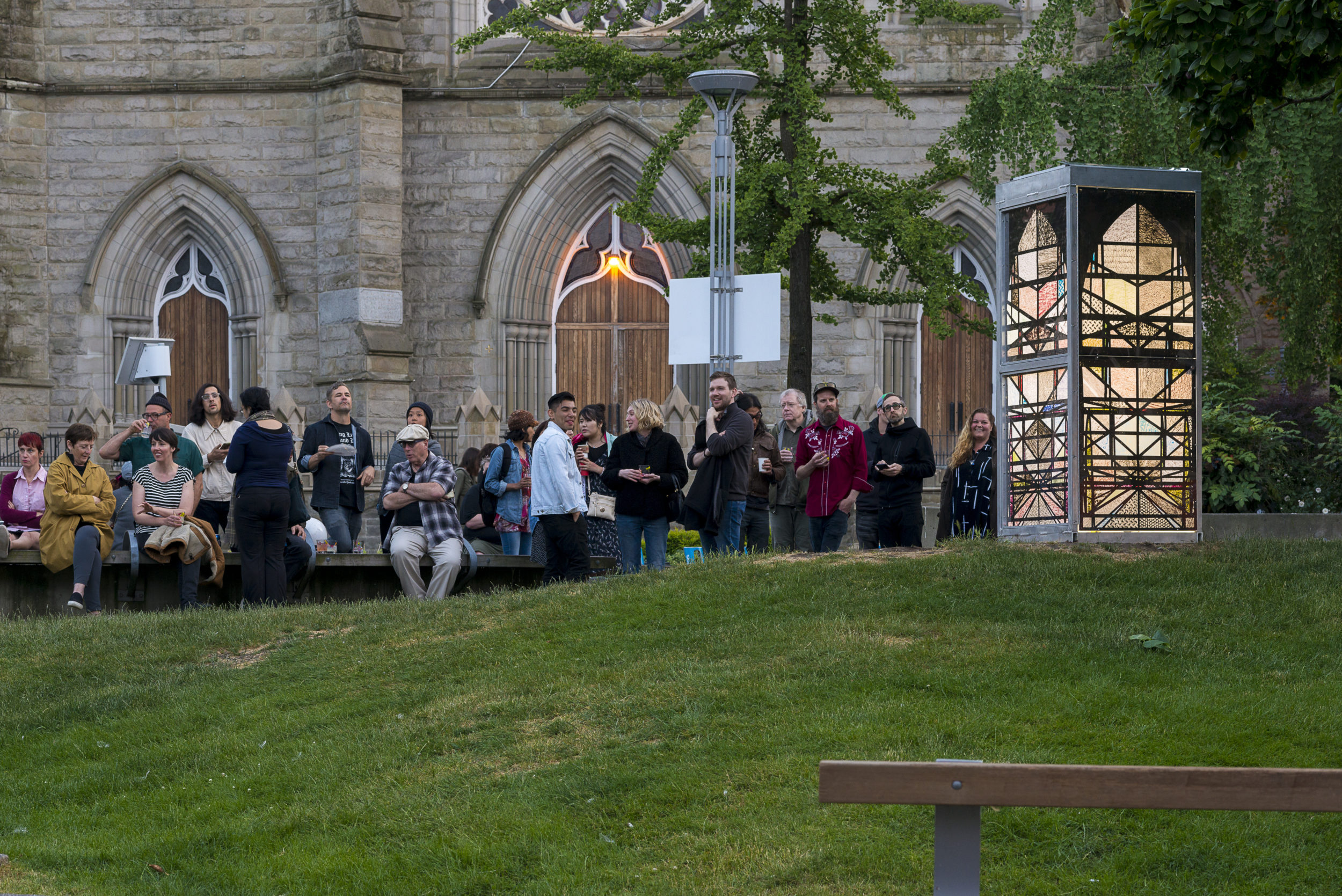
-
What Are Our Supports?
$45 $36What Are Our Supports chronicles a series of artist's projects in a downtown Vancouver park curated by Joni Low in 2018. Edited by Joni Low and Jeff O'Brien, the book reflects on the urgency of questions about environmental, social and political precarity all the more intensified by a global pandemic and human-induced climate crisis.
More Info -

